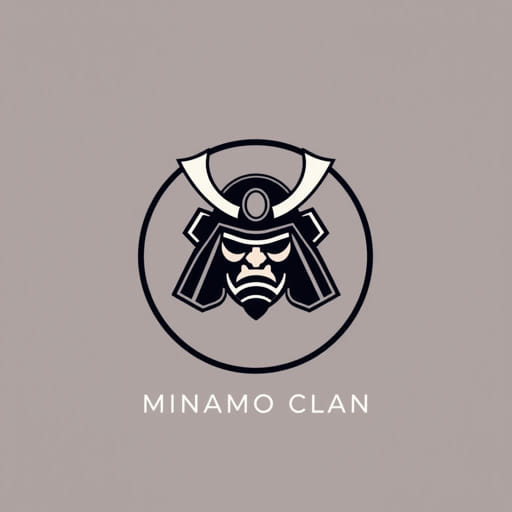The Minamoto clan holds an important place in Japanese history as one of the most powerful noble families during the Heian and Kamakura periods. Known for their samurai legacy and close connections with imperial bloodlines, the Minamoto rose to prominence through warfare, political alliances, and the establishment of the first shogunate. Today, many people are curious about whether this legendary clan still exists, either in name, bloodline, or influence in modern Japan. The question touches not only on genealogy but also on how ancient traditions survive and evolve over centuries.
Origins of the Minamoto Clan
Imperial Beginnings
The Minamoto clan originated from the imperial family during the Heian period (7941185). The title Minamoto was bestowed by emperors upon certain non-heir sons to distinguish them from the main imperial line. This act was part of a political strategy to reduce the burden on the imperial household and prevent rivalries. These descendants became known as the Minamoto, or Genji in the Sino-Japanese reading.
Rise to Power
Over time, the Minamoto established themselves as powerful warriors and landowners. Their influence grew especially during the Genpei War (11801185), when Minamoto no Yoritomo defeated the rival Taira clan and established the Kamakura shogunate in 1192. This marked the beginning of samurai-led governance in Japan, with Yoritomo as the first shogun. From this point on, the Minamoto were no longer just a noble family but central figures in Japanese political history.
The Decline of the Clan as a Political Force
Short-Lived Shogunate
Although the Minamoto founded the Kamakura shogunate, their direct rule was relatively short-lived. After Yoritomo’s death, internal family conflict and power struggles weakened the clan’s control. Eventually, the HÅjÅ clan, originally allies of the Minamoto through marriage, seized real power as regents to the shogun, diminishing the Minamoto’s role.
Loss of Central Identity
Following the fall of their shogunate, the Minamoto name remained prominent but fragmented. Many descendants blended into other clans or adopted new names. Over centuries, Japan’s feudal system continued to evolve, and the centralized identity of the Minamoto as a unified political force faded. However, the clan’s legacy lived on in literature, culture, and the structure of Japanese governance.
Traces of the Minamoto in Modern Times
Do Descendants Still Exist?
Although the Minamoto clan does not exist today as an organized political or aristocratic body, it is highly likely that many Japanese people living today are descended from them. The passage of centuries, intermarriage with other noble families, and the diffusion of the bloodline mean that their lineage continues, albeit not always under the Minamoto name.
Surnames and Hidden Lineages
The majority of modern Japanese surnames have been standardized and are no longer directly linked to noble clans. However, some families may still trace their genealogy back to the Minamoto. In rare cases, individuals carry the name ‘Minamoto’ as a formal part of their family registry, though this is exceptionally uncommon. Genealogical societies and temple records occasionally reveal such links, especially among families preserving aristocratic or samurai heritage.
Cultural Legacy of the Minamoto Clan
Influence on Japanese Literature
The Minamoto have inspired countless works of literature, most notably in ‘The Tale of Genji,’ which refers to a fictional member of the Genji clan. Their historical exploits have been romanticized in Noh drama, kabuki, and historical novels. The ideals of bushidÅ, honor, and loyalty often portrayed in these works trace their roots back to the samurai traditions that the Minamoto helped shape.
Presence in Temples and Shrines
Several shrines in Japan are dedicated to Minamoto ancestors, especially Minamoto no Yoritomo. The Tsurugaoka HachimangÅ« in Kamakura, for example, remains an important historical site and was originally established by Yoritomo himself. These places continue to honor the clan’s spiritual and historical contributions.
The Minamoto in Japanese National Identity
Symbol of Warrior Nobility
The Minamoto clan is often portrayed as the embodiment of samurai virtue and military prowess. Their battles, especially against the Taira, serve as a foundation for the heroic narratives that define Japan’s warrior past. As such, the Minamoto are frequently referenced in educational materials, media, and public commemorations of Japan’s feudal era.
Inspiration for Modern Japanese Values
The values of discipline, duty, and loyalty associated with the Minamoto continue to influence modern Japan, particularly in cultural expressions and national identity. While no formal clan exists today, the name ‘Minamoto’ carries symbolic weight and remains a reminder of the country’s complex historical evolution.
Key Figures from the Minamoto Clan
- Minamoto no Yoritomo Founder of the Kamakura shogunate and first shogun of Japan.
- Minamoto no Yoshitsune Legendary military commander and half-brother of Yoritomo; known for his tactical brilliance during the Genpei War.
- Minamoto no TÅru Heian period nobleman believed to be a model for the fictional Hikaru Genji.
While the Minamoto clan as a political and noble institution no longer exists in the formal sense, its legacy persists in Japanese culture, identity, and family histories. Descendants of the clan likely live today, though their connection to the ancient name may not be visible in everyday life. The story of the Minamoto is more than a tale of rise and fall; it is a reflection of how history weaves into the present through bloodlines, values, and cultural memory. The influence of the Minamoto clan endures not through preserved palaces or military rule, but through the living spirit of Japan’s enduring traditions.
